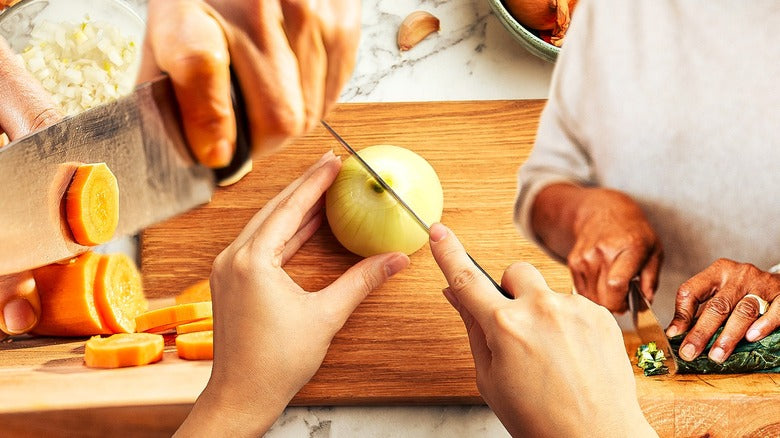When dedicated kitchen professionals encounter the issue of a blotchy cast iron cookware post-seasoning, the question arises: why does my cast iron look blotchy after seasoning? This article aims to delve into the nuances of proper seasoning techniques, addressing the reasons behind blotchiness and providing practical solutions to enhance the performance of cast iron.
Many chefs, including those in professional kitchens, rely on the exceptional heat retention and non-stick properties of cast iron. However, when the seasoning layer does not adhere evenly, it can lead to unsightly and uneven patches that can impact cooking results. Let's examine the factors that contribute to a blotchy appearance.

Understanding Blotchy Seasoning
To address the phenomenon of blotchiness, it is vital to understand what seasoning truly is. Seasoning is the process of applying a thin layer of fat and heating it to create a protective, non-stick coating on cast iron cookware. If this process is not executed correctly, the result can be uneven and blotchy surfaces.
Common Reasons for Blotchy Seasoning
1. **Insufficient Prepping**: A spotless surface is paramount. If the cast iron is not cleaned and dried properly before seasoning, residual food particles or moisture can cause the oil to bead, leading to patchy results.
2. **Oil Choice**: The type of oil used can dramatically affect the final appearance. Oils with low smoke points can lead to uneven seasoning layers.
3. **Temperature Control**: Cooking on too high or too low heat can prevent even coating. The temperature should ideally stay within 400F to 500F for optimal seasoning.
Tips to Achieve Even Seasoning
For kitchen professionals, maintaining cookware is essential. Here are some expert tips to achieve an even, flawless seasoning:
1. **Clean Thoroughly**: Use hot water and a stiff brush to clean your cast iron, then dry it completely. Consider using salt and oil scrub if necessary.
2. **Choose the Right Oil**: Use oils with high smoke points such as grapeseed or canola oil that can withstand high temperatures without degradation.
3. **Apply Thin Layers**: Start with a thin layer of oil. A little goes a long way. Too much oil can lead to pooling, which can cause blotchiness.
Restoration Techniques for Blotchy Cast Iron
Should you find yourself faced with blotchy cast iron despite taking precautions, restoration is possible. Heres what you can do:
1. **Strip the Old Seasoning**: If needed, consider stripping the old seasoning using oven cleaners or a self-cleaning oven cycle.
2. **Re-season with Care**: After stripping, follow the steps above meticulously to re-season, ensuring each layer is even.
3. **Experiment**: Sometimes, experimentation with different oils and temperatures can lead to better results.
Internal Resources for Further Reading
For those eager to dive deeper, check these internal resources:
External Expert Insights
Further insights on the importance of proper seasoning can be found on Serious Eats, detailing various techniques and recommendations from culinary professionals.

FAQs about Cast Iron Seasoning
1. Why is my cast iron still sticky after seasoning?
A sticky surface usually indicates that you applied too much oil. Ensure that you use a very thin layer and allow it to properly cure at the right temperature.
2. How often should I season my cast iron?
Seasoning should be done periodically, around every few months, or after heavy use, to maintain the non-stick coating.
3. Can I use soap on my cast iron?
While its advisable to avoid soap, small amounts can be used. Just ensure to re-season afterward if you use soap excessively.
As an Amazon Associate, I earn from qualifying purchases.






Leave a comment
This site is protected by hCaptcha and the hCaptcha Privacy Policy and Terms of Service apply.